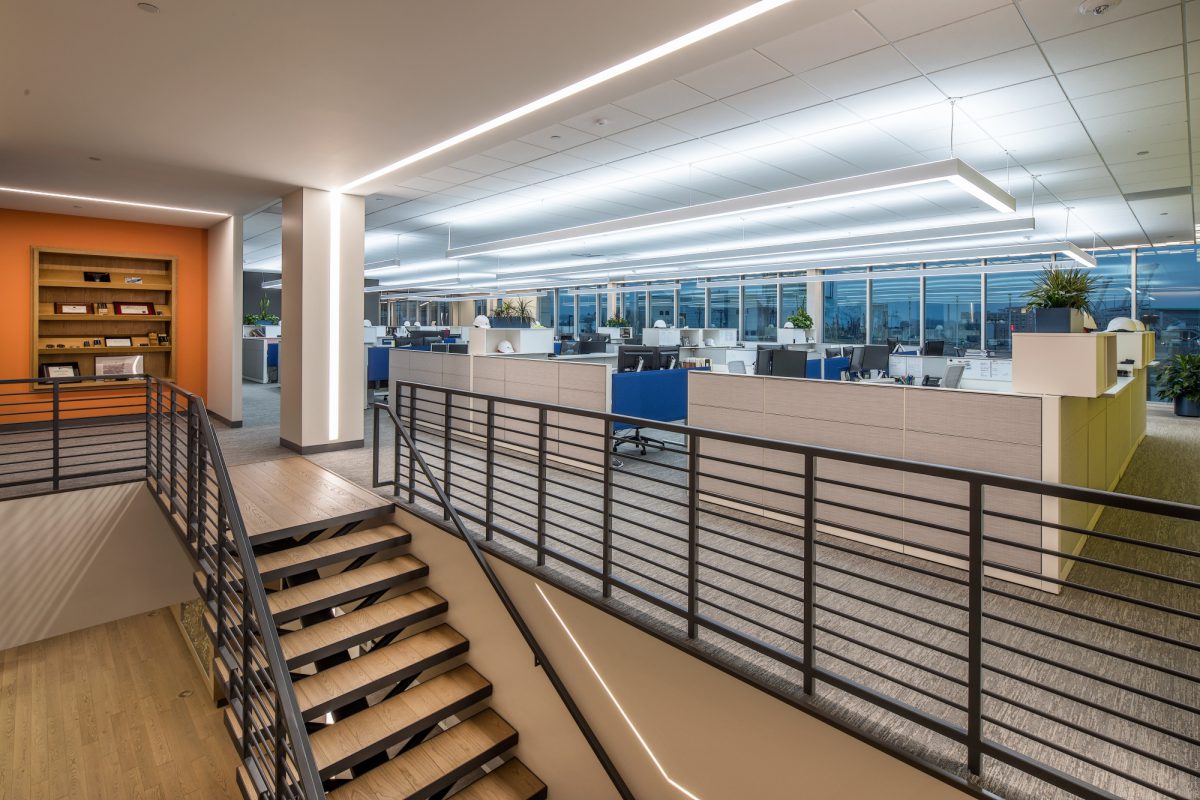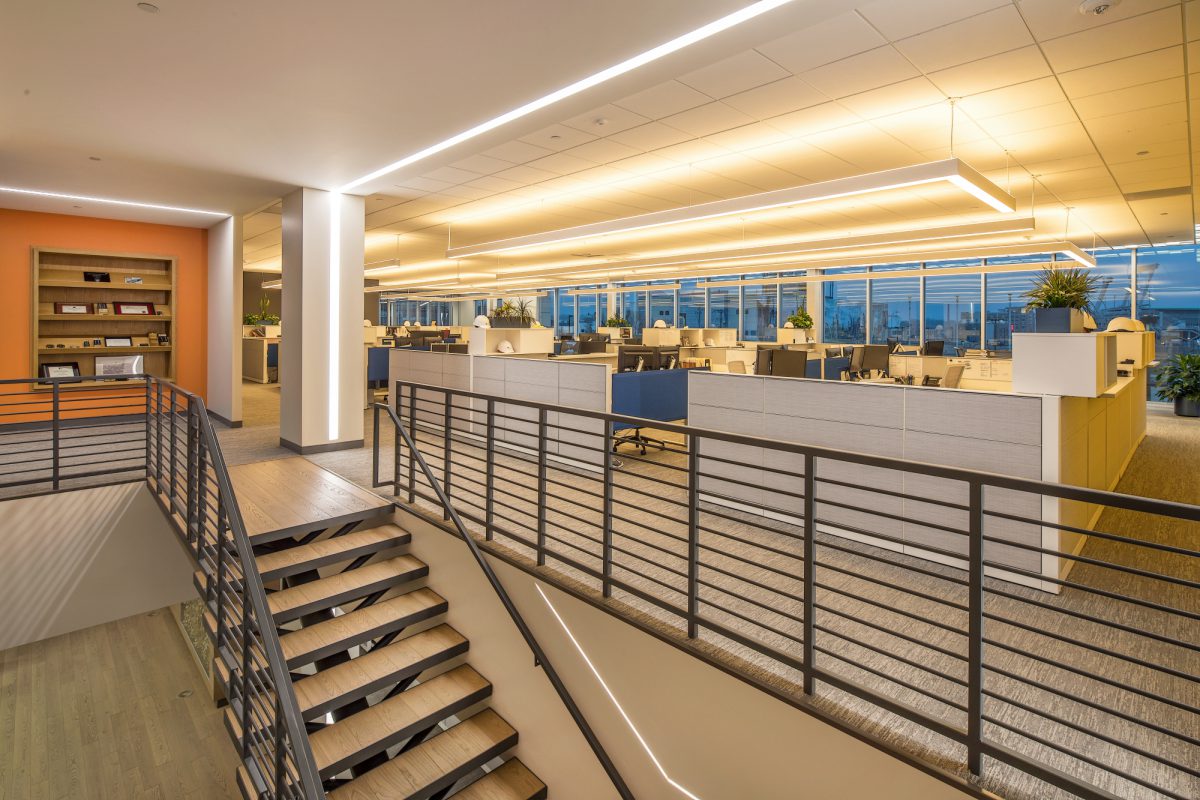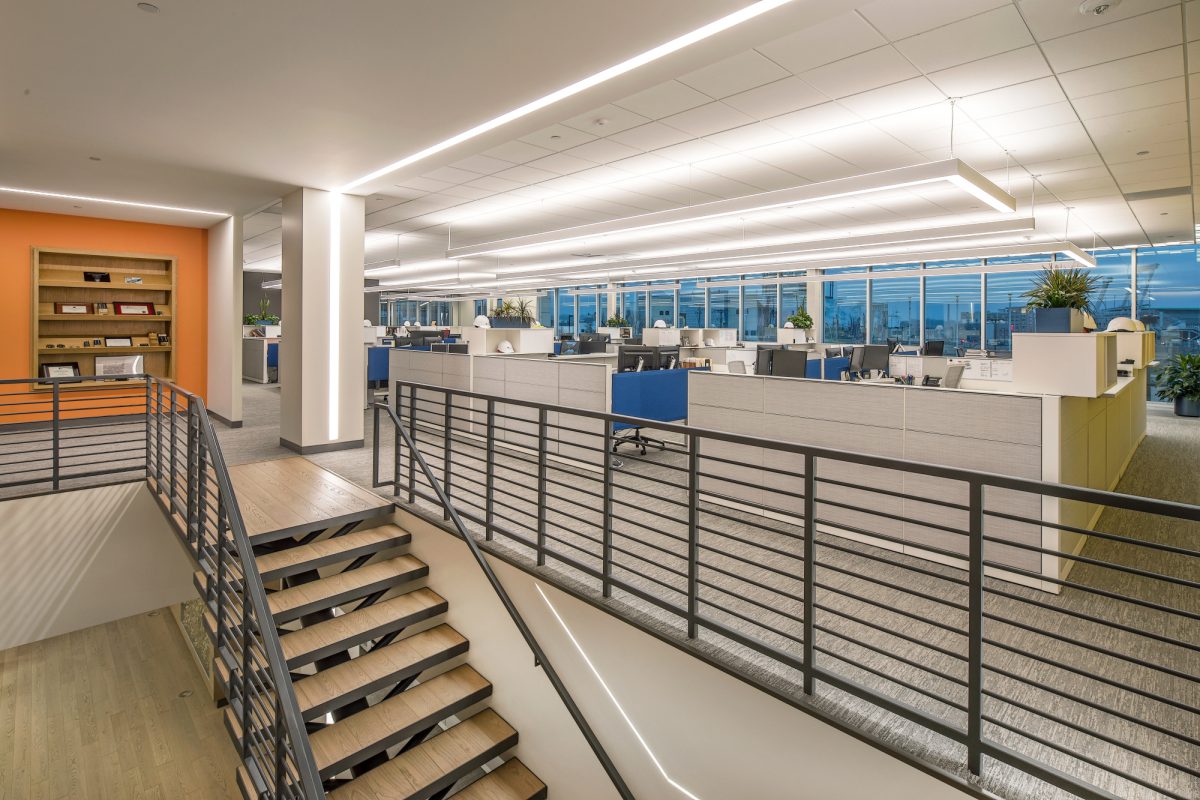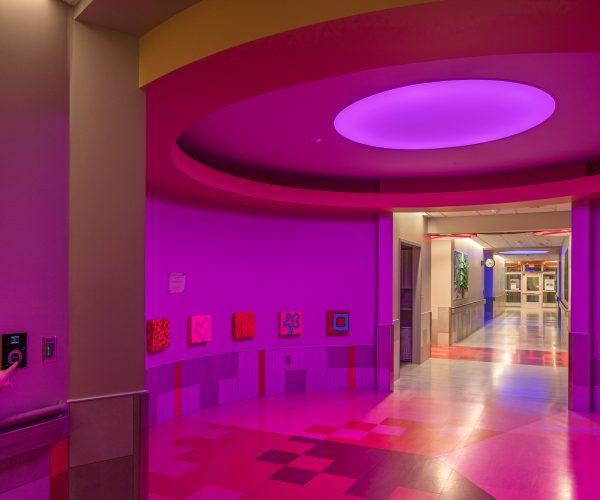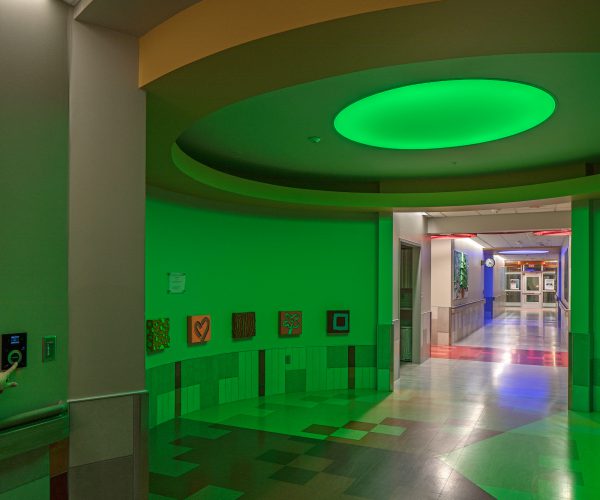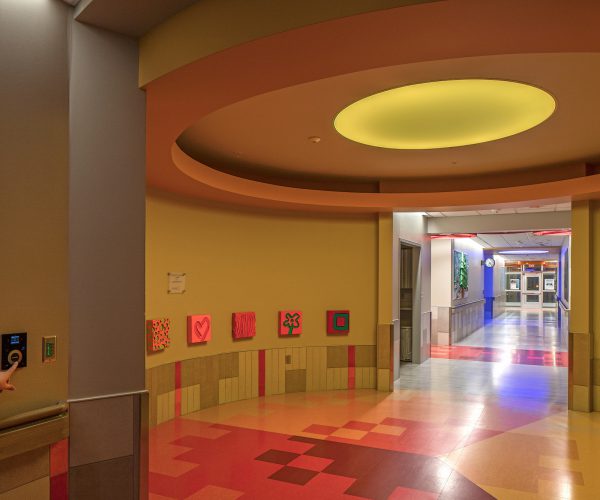Human-Centric Lighting that Transforms the Classroom and Office
Light is like prescribed medication, you have to take it at the right time. People tend to think only about blue light and the color of light, but the narrative really needs to change.” – Mariana Figueiro, Director of the Lighting Research Center
Light, with its permanence and ambient nature, is a critical element of human life. The development of manmade lighting has only existed within the fabric of society for the past 150 years. Electrical lighting’s effect on human biology remains a subject at large, yet to be fully understood by researchers. Although many current lighting topics remain hot-button issues with inconclusive data such as its effects on circadian rhythm, sleep quality, injury recovery, etc. The creative integrations of lighting systems can supplement holistic well-being. Human-centric lighting design that incorporates and complements a space’s access to factors such as daylight availability has seen boosts in productivity and higher testing results in overall mental and emotional well-being.
Light plays a vital role in interior spaces. Light’s creative adaptations for differing goals and spaces, such as educational facilities and corporate office spaces, pave the way towards well-informed architecture that necessitates cutting-edge lighting design solutions.
The Impact of Improper Lighting
Through the research and study of interior lighting and its effects on mental cognition and performance, researchers have found that a lack of access to daylight along with poor lighting conditions are inhibitors of long-term memory, concentration, and motivation (Cajochen, 2000). Poor lighting standards are specifications which fail to meet the accepted illuminance levels recommended by the Illuminating Engineers Society and the American National Standards Institute.
Studies surrounding the lack of access to daylight have concluded there is significant evidence to support a direct correlation between lack of daylight access and lowered cortisol levels as well as poor levels of melatonin suppression during the day (Leproult, 2001). This leads to building occupants who end their days more tired and with a higher amount of stress hormones compared to those with proper lighting.
The lighting research community holds a well-documented track record of the importance of light and its role in the built environment. It is essential. In stark contrast to their Industrial Revolution-era counterparts, modern buildings prioritize daylight availability while allowing lighting systems to mimic daylight as much as possible while staying within the project’s budget. Lighting designers also continue to explore the human psyche’s relationship with light and how we can adjust color and intensity to aid building occupants with day-to-day tasks. (Jamrozik, 2019)
In education, for example, fluorescent lamps typically create a harsh overexposure of light intensity and, due to the physics of the lamp, generate a flicker rate that can be detrimental to learning and performance (Morrow, 2018).
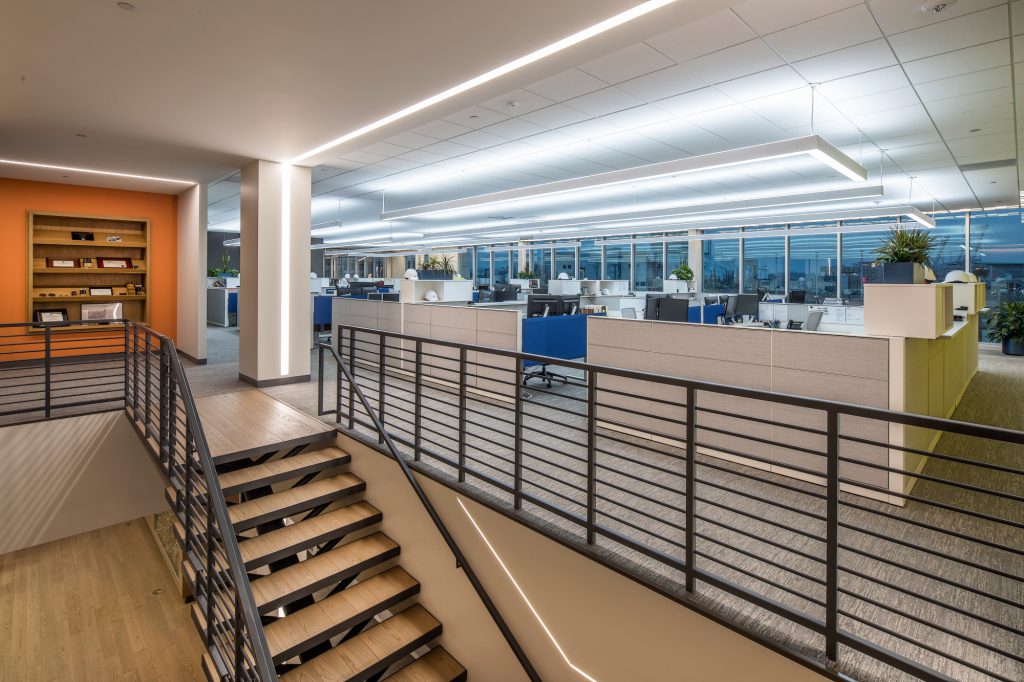
When working on a project with a tighter budget, finding a balance to provide adequate energy conservation, longevity of use, and effective illuminance levels remains a high priority for architects and designers. Alvine’s lighting design team has found that tunable white lighting offers an exceptional solution for offices looking to capture benefits linked with color-correlated temperature (CCT) lighting while also balancing energy consciousness and maintainability. Certain CCT tones and light intensities have been proven to affect cognitive performance positively (Wei, 2014). Providing adequate CCT functionality for office spaces can assist employees as they mimic daylight’s differing light color and intensity throughout the day (Van der Zande, 2018). Additionally, providing differing lighting temperatures throughout the day provides office workers with ample opportunity to use different lighting for different tasks. One study found that warm white lighting can assist adults with project collaboration, while cooler lights are more optimal for reading cognition, attentiveness, and focus (Baron et al., 1992).
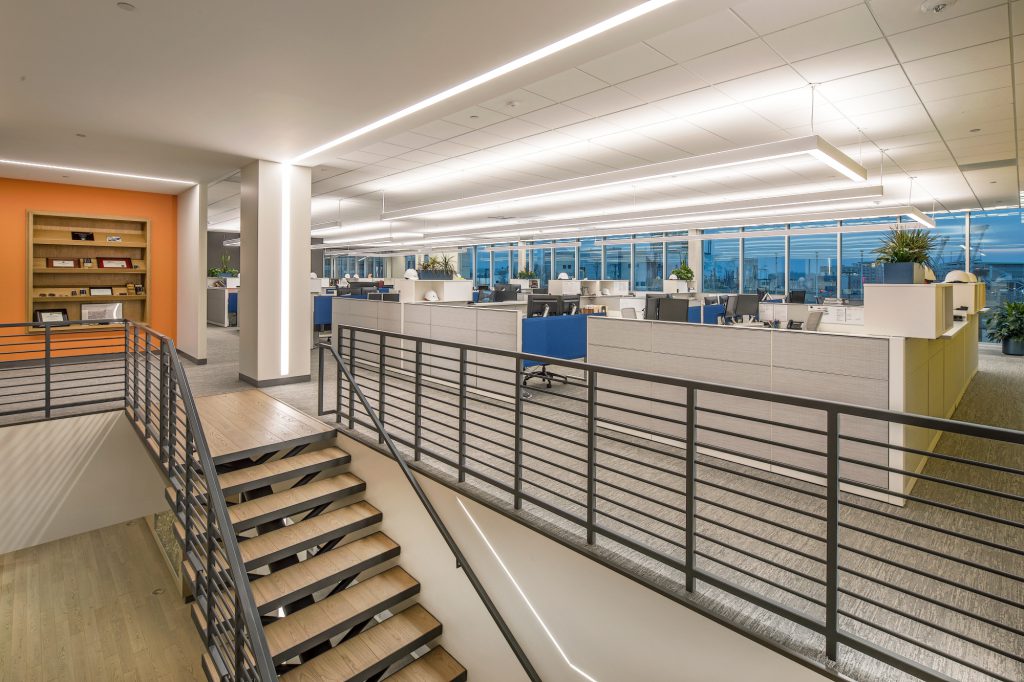
“Our shades automatically adjust to the amount of light and angle of the sun to ensure that occupants receive ample amounts of daylight without distracting glare or lighting overexposure,” she explained. “While the research on lighting’s effects on cognition isn’t completely conclusive, a combination of different elements and design allows us to provide the most comfort for building occupants as they go about their work.”
The Alvine corporate headquarters offers a dynamic and multi-faceted solution that provides optimal light levels while also offering spaces that cater to personal preferences. The award-winning design touts tunable white fixtures in open office areas that are paired with a sophisticated controls system. The system adjusts the CCT based on the time of day and outdoor weather in an effort to blend the indoor light cohesively with the incoming daylight. The code programming the color adjustments for the lighting system was written by the Alvine lighting design team. The open-office pendants are organized into rectilinear shapes, and provide ample illuminance while minimizing glare.
Conference and shared personal work areas can be catered to different light intensity settings and shade control using a control system. Pre-set options are integrated into every conference room’s light switch. Each conference room touts a unique lighting design with custom pendants.
The design utilized RGBW color-changing luminaires in select areas with simple controls that cater to the comfort and ability of users while minimizing glare. Many students are limited to different assistive devices, which often results in their heads being positioned toward the ceiling for large portions of the day. This made it vital to integrate multiple points of visual stimuli within the ceiling’s design, while being cautious of potential glare issues, to ensure a comfortable and enriching environment.
The architect and the Alvine design team collaborated to select luminaires that meshed with architectural wall treatments. LED illuminators with twinkle wheels were used to integrate end-emitting fiber optics with patterned architectural ceiling tiles that create a playful ceiling effect. In the entryway, students are welcomed by an audiovisual experience via a controls system that continuously monitors the levels and frequency of an audio track. Lighting levels and colors are adjusted in real-time to mimic the pace and rhythm of the audio track.
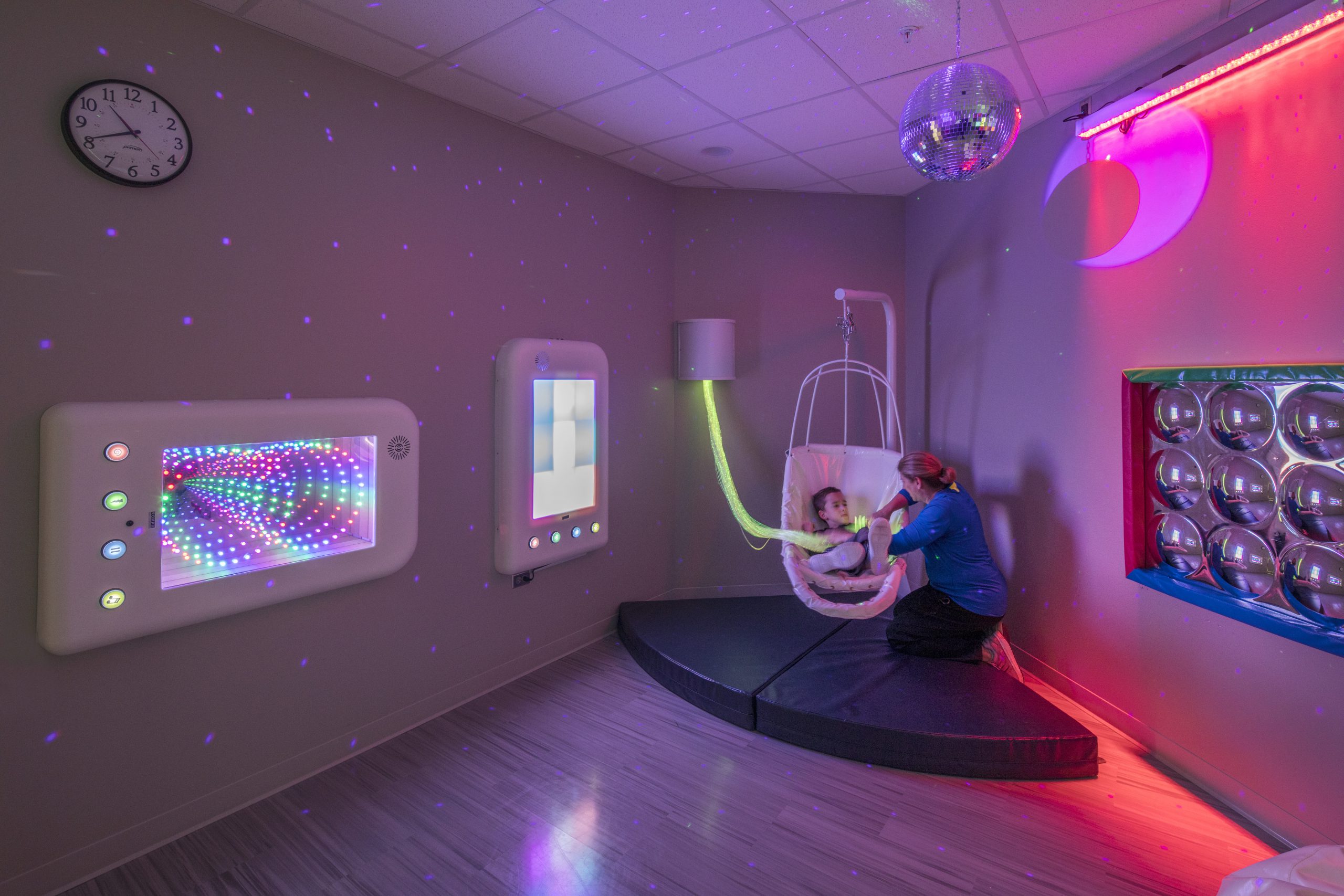
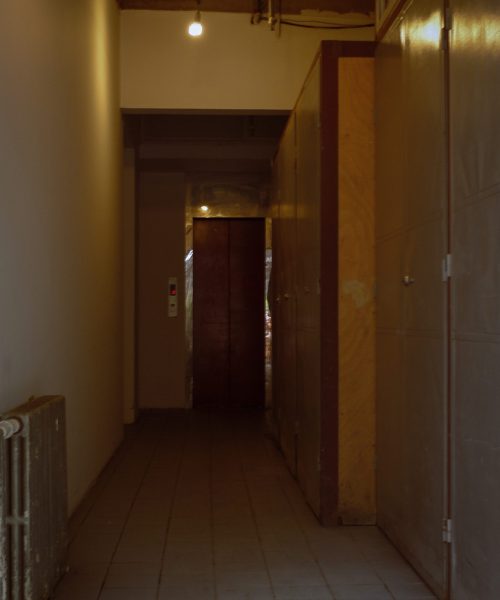
Changing a Tune in the Office
Tunable white lighting solutions have been instrumental in implementing human-centric lighting systems in a wide variety of structures spanning multiple building designs. An ever-growing understanding of human biological response in relation to electric lighting has revealed non-visual reactions which affect circadian phase shifting, alertness, melatonin suppression, etc. While the current research is indicative that there’s no true replacement for sunlight (Esposito, 2022), there are a handful of studies indicating that tunable white lighting which thoughtfully complements daylight access has been associated with improved work performance and overall feelings of satisfaction in both the office and classroom (Grangaard, 1995; Jamrozik, 2019; Van der zande, 2018).
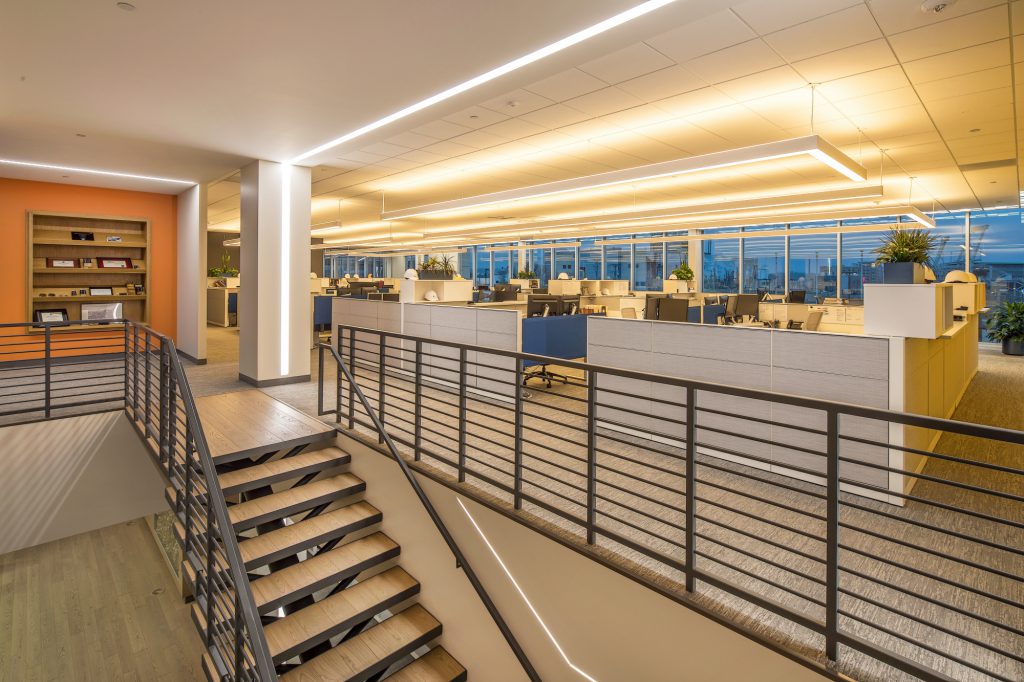
Full-color-tunable systems are more complex in nature and are less energy efficient compared to tunable white systems. The Alvine team has found that, when confined to special areas, full-color systems add their unique benefits to a structure without compromising a project’s budget (read more about our full-color-tuning solutions below). In order for tunable white systems to be successful, the full breadth of the building’s design has to be taken into consideration so that building occupants can experience the desired effects found within these research studies (Collier, 2023; Tanner, 2008).
To suggest that human-centric lighting is the only factor impacting mood and cognition in the workplace would be one-dimensional. According to lighting designer Michelle Eble-Hankins, Ph.D., P.E., LC, proper lighting design for office tasks converge daylight access, glare mitigation, and effective color-correlated temperature scheduling. Proper illuminance/luminance values and a myriad of other considerations are important to consider as well.
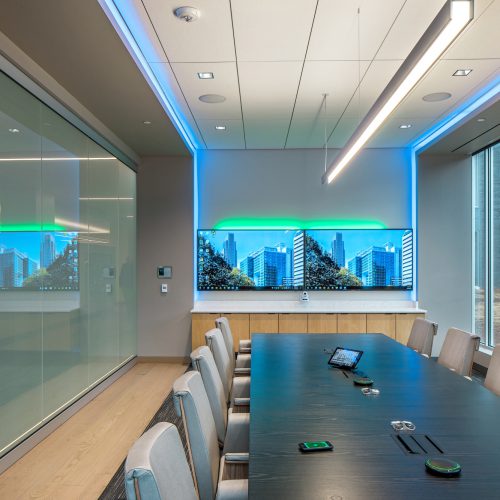
Human-Centric Lighting in the Classroom
The Post-industrial movement in education architecture has involved a number of overarching motifs including multi-functional spaces built to suit growing learners with different needs. In some schools, human-centric lighting has played an integral factor in catering to these learners and those requiring special accommodations.
The Omaha Public Schools’ Dr. J.P. Lord School (JP Lord) serves handicapped students with hearing, vision, speech, and motor impairments. Support staff, teachers, and medical professionals are aided by the harmonization of the space’s architectural design and its unique lighting applications which earned recognition from the Illuminating Engineers Society.
The Alvine design team was pitted with the task of selecting luminaires that would complement the architectural design and also provide a visually stimulating environment for the students.
The effective use of dynamic lighting can be integral for communicating transitions to different activities throughout the day. For nonverbal learners and those with limited verbal skills, these visual cues are a vital indicator of signaling changes in their routines (Sleegers, 2013; Mott, 2012). Mary Wurst, P.E., an Alvine Project Manager specializing in the education sector, concurs the added level of communication that dynamic lighting brings to the “educational table” provides significant value for neurodivergent and neurotypical learners.
“Teachers love having that flexibility,” Mary explained, “Education has really transitioned to better cater to the users of the space, and dynamic lighting has been instrumental in communicating changes in activities and routines for teachers and students.”
Mary is currently developing an approach to gather both quantitative and qualitative feedback from teachers using these systems across Alvine projects. According to Mary, teachers are a direct link to insights within the classroom and their feedback can prove vital to finding breakthroughs in mood, cognition, and overall performance within the classroom.
These endeavors are being felt on a national scale as architects and designers have more deliberate conversations surrounding education and built environments. Dr. Brent E. Betit, a 30-year educator that has designed educational programs for specific learning disabilities, talks about this phenomenon more in an interview with Eaton’s Lighting Division.
“While I’m not aware of empirical data or dedicated research showing that students with learning disabilities perform better in purpose-built environments, I’ve observed it in practice,” Brent explained. “The good news is that every specialized practice evolves over time, and architects are getting better at designing learning environments, if we always designed for kids who are distractible and struggle to learn, the results would be better for everyone.”
Works Cited
Baron, Robert & Rea, Mark & Daniels, Susan. (1992). Effects of indoor lighting (illuminance and spectral distribution) on the performance of cognitive tasks and interpersonal behaviors: The potential mediating role of positive affect. Motivation and Emotion. 16. 1-33. 10.1007/BF00996485.
Jamrozik A., Clements N., Hasan S. S., Zhao J., Rongpeng Zhang R., Carolina Campanella, Vivian Loftness, Paige Porter, Shaun Ly, Selena Wang, Brent Bauer. (2019). Access to daylight and view in an office improves cognitive performance and satisfaction and reduces eyestrain: A controlled crossover study. Building and Environment, Volume 165.
Leproult L. R., Colecchia E. F., L’Hermite-Baleriaux M., Van Cauter E. (2001). Transition from dim to bright light in the morning induces an immediate elevation of cortisol levels. Journal of Clinical Endocrinology & Metabolism, 86, 151-157.
Esposito, T., Houser, K. (2022) Correlated color temperature is not a suitable proxy for the biological potency of light. Sci Rep 12, 20223. https://doi.org/10.1038/s41598-022-21755-7
Van der Zande, B. Ph.D. (2018) Using tunable white to boost comfort and productivity in the workplace. Philips: Global Professional Site. https://www.lighting.philips.com/main/support/connect/lighting-technology/comfort-and-well-being/using-tunable-white-to-boost-comfort-and-productivity-in-the-workplace.
Wei M., Houser K., Orland B., Dean H. Lang, Nilam Ram, Martin J. Sliwinski, Mallika Bose. (2014) Field study of office worker responses to fluorescent lighting of different CCT and lumen output, Journal of Environmental Psychology, Volume 39, Pages 62-76, ISSN 0272-4944, https://doi.org/10.1016/j.jenvp.2014.04.009.
Mott, M. S., Robinson, D. H., Walden, A., Burnette, J., & Rutherford, A. S. (2012). Illuminating the Effects of Dynamic Lighting on Student Learning. SAGE Open, 2(2). https://doi.org/10.1177/2158244012445585.
Sleegers P, Moolenaar N, Galetzkab M and van der Zandenc, B. (2013) Lighting affects students’ concentration positively: Findings from three Dutch studies. Lighting Research & Technology. https://doi.org/10.1177/1477153512446099
Morrow, Brenda & Kanakri, S. (2018). The Effect of LED and Fluorescent Lighting on Children in the Classroom. EDRA 2018 Conference. https://www.researchgate.net/publication/327209776_The_Effect_of_LED_and_Fluorescent_Lighting_on_Children_in_the_Classroom
Betit, B. (2018). Optimizing lighting in schools for students with specific learning disabilities and ADHD. Eaton Corporation. https://www.eaton.com/ph/en-us/company/news-insights/lighting-resource/design/optimizing-lighting-schools-learning-disabilities-adhd.html.
Collier, J. M., Wilkerson, A., Durmus, D., & Rodriguez-Feo Bermudez, E. (2023). Studying Response to Light in Offices: A Literature Review and Pilot Study. Buildings, 13(2), 471. MDPI AG. Retrieved from https://dx.doi.org/10.3390/buildings13020471.
Grangaard, E.M. (1995). Color and Light Effects on Learning. Paper presented at the Association of Childhood Education International Study Conference and Exhibition (Washington, DC, April 12-15, 1995). https://files.eric.ed.gov/fulltext/ED382381.pdf.
Tanner, C. K. (2008). Explaining relationships among student outcomes and the school’s physical environment. Journal of Advanced Academics, 19, 444–471.
Cajochen, J. M. Zeitzer, C. A. Czeisler, and D.-J. Dijk. (2000). “Dose-response relationship for light intensity and ocular and electroencephalographic correlates of human alertness,” Behavioral Brain Research, vol. 115, no. 1, pp. 75–83, 2000.

